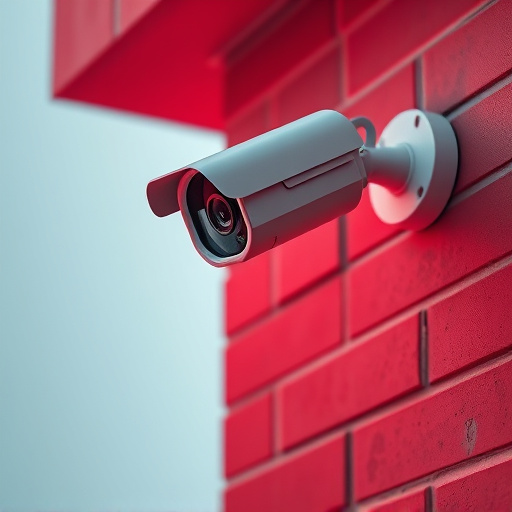The strategic placement of realistic yet fake cameras in high-risk areas can significantly deter crime in neighborhoods, reducing property-related offenses and fostering safer environments. These decoy cameras, costing less than genuine security equipment, create an illusion of enhanced surveillance, leveraging both psychological and physical deterrents to protect communities. For maximum effectiveness, they should be placed strategically, maintained to appear realistic, combined with actual security cameras, adapted to local crime trends, and regularly replaced.
In today’s digital era, neighborhoods face rising theft rates, impacting community safety and well-being. This article explores an innovative solution: convincing decoy cameras as a powerful tool in neighborhood crime prevention. We delve into the psychological impact of these fake cameras on deterring would-be thieves, discuss various types and optimal placement strategies, and present real-life success stories showcasing their effectiveness. By understanding the role of decoy cameras, communities can enhance security and create safer environments.
- Understanding the Impact of Neighborhood Crime
- The Role of Decoy Cameras in Deterring Theft
- Types and Placement Strategies for Effective Decoy Cameras
- Real-Life Success Stories and Best Practices
Understanding the Impact of Neighborhood Crime
In many communities, the presence of crime can significantly impact the overall safety and well-being of neighbors. From petty theft to more serious offenses, neighborhood crime prevention is a collective effort that requires innovative solutions. One effective tool in this regard are decoy cameras, which serve as powerful psychological deterrents. These fake cameras mimic real surveillance equipment, misleading potential thieves and vandals into believing their actions are being monitored.
The impact of these decoy cameras on neighborhood crime prevention cannot be understated. By strategically placing them in high-risk areas, residents can create an illusion of enhanced security. This simple yet clever tactic often discourages criminal activity, as offenders are less likely to target locations where they believe they might be caught on camera. As a result, neighborhoods with active decoy camera initiatives tend to experience lower rates of property-related crimes, fostering a safer and more peaceful environment for all residents.
The Role of Decoy Cameras in Deterring Theft
Decoy cameras, also known as fake or mock surveillance cameras, have emerged as an innovative and effective tool in neighborhood crime prevention. Their primary role is to deter potential thieves by creating the illusion that a property is under constant watch. These fake cameras are meticulously designed to look real, often featuring intricate details and LED lights, making it difficult for criminals to distinguish them from genuine security equipment.
By strategically placing these decoy cameras around a neighborhood or property, residents can significantly reduce the risk of theft. Criminals, aware that they could be caught on camera, are more likely to reconsider their actions. This psychological impact, combined with the physical presence of fake cameras, can serve as a powerful deterrent, promoting a safer environment for everyone.
Types and Placement Strategies for Effective Decoy Cameras
Decoy cameras, also known as dummy or fake security cameras, come in various types designed to deter thieves and criminals. These range from realistic-looking models that mimic actual surveillance equipment to simpler, more obvious fakes. Some are passive, simply acting as visual deterrents, while others may be linked to an alarm system or even record video for later review. When selecting decoy cameras, consider the specific areas you wish to protect—such as storefronts, warehouses, or homes—and choose models that blend in naturally with the surroundings.
Strategic placement is key to effective decoy camera setups. For outdoor spaces, place them in visible locations like entry points, alleyways, or near valuable assets. Garages and backyards also benefit from these cameras, as do front porches and doors. Indoors, position them in common areas like lobbies, reception rooms, or anywhere high-value items are stored. Avoid placing them too obviously, as genuine cameras often work best when subtly integrated into the environment to maximize their deterrent effect on neighborhood crime prevention.
Real-Life Success Stories and Best Practices
In many real-world scenarios, decoy cameras have proven to be a powerful tool in neighborhood crime prevention. Several communities across the globe have reported significant reductions in theft and vandalism after implementing fake camera systems. For instance, a quiet residential area in the UK witnessed a 40% decrease in local thefts within just one year of installing realistic-looking decoy CCTV cameras. This success story highlights the psychological impact of these devices, as potential criminals are deterred by the visible presence of surveillance technology, even if the cameras are not functional.
When deploying decoy cameras for maximum effectiveness, it’s essential to follow best practices. Place them in strategic locations, such as entry points and high-risk areas, to create a comprehensive surveillance network. Ensure the decoys are well-maintained and regularly replaced to maintain their realism. Combine this with regular maintenance of actual security cameras to reinforce the message that neighborhood watch is both visible and active. Additionally, keep up with local crime trends and adapt camera placements accordingly, as criminals often adjust their tactics in response to security measures.
Fake cameras, or decoy cameras, have emerged as a powerful tool in neighborhood crime prevention, particularly for theft. By strategically placing these realistic yet functional devices, communities can significantly deter potential criminals and create an environment that promotes safety and security. In light of the success stories shared, it’s clear that combining visible surveillance with a well-informed placement strategy can lead to substantial reductions in neighborhood crime rates. Embracing this innovative approach could be the key to fostering peaceful and secure living spaces.
